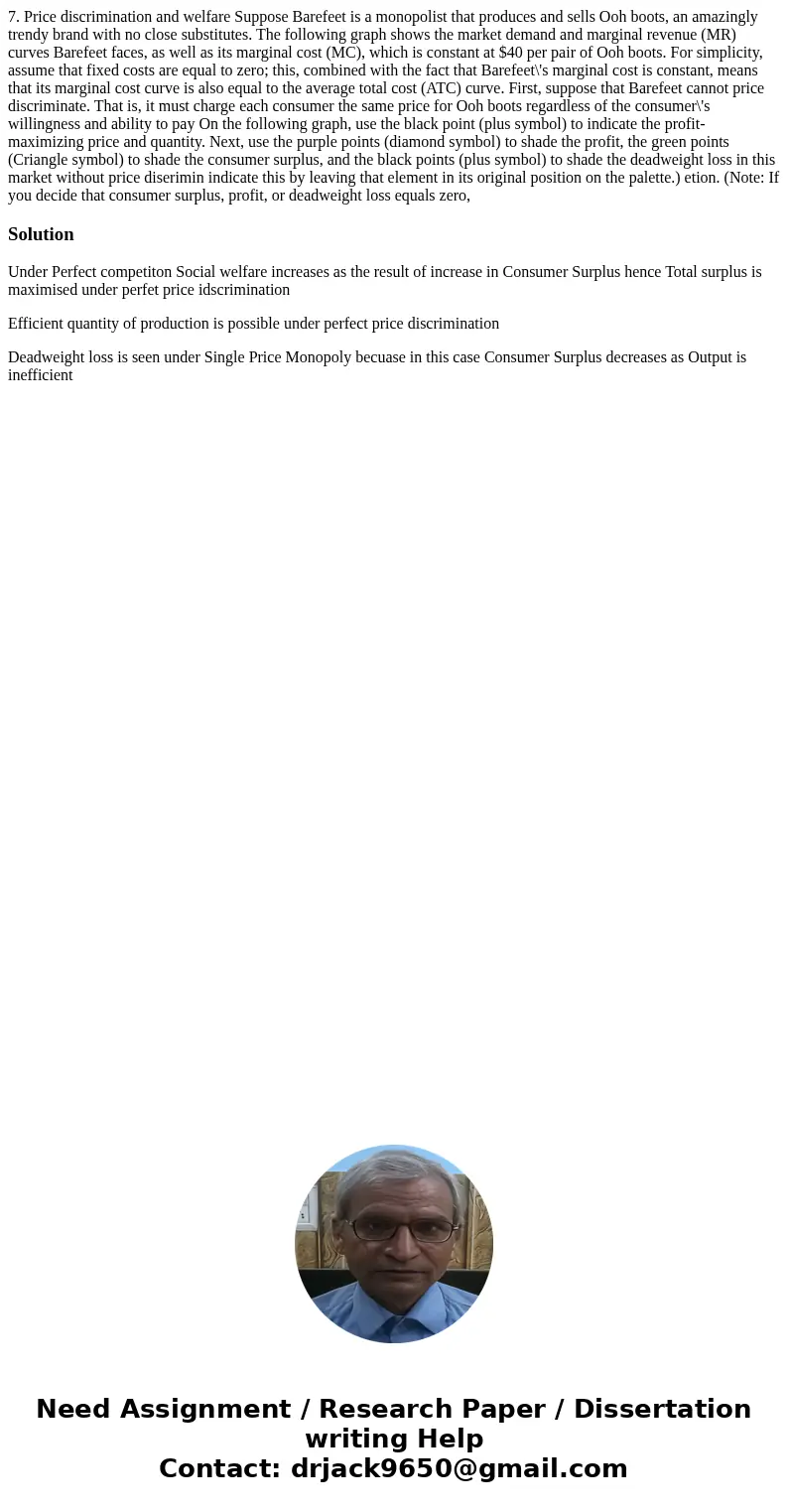7 Price discrimination and welfare Suppose Barefeet is a mon
7. Price discrimination and welfare Suppose Barefeet is a monopolist that produces and sells Ooh boots, an amazingly trendy brand with no close substitutes. The following graph shows the market demand and marginal revenue (MR) curves Barefeet faces, as well as its marginal cost (MC), which is constant at $40 per pair of Ooh boots. For simplicity, assume that fixed costs are equal to zero; this, combined with the fact that Barefeet\'s marginal cost is constant, means that its marginal cost curve is also equal to the average total cost (ATC) curve. First, suppose that Barefeet cannot price discriminate. That is, it must charge each consumer the same price for Ooh boots regardless of the consumer\'s willingness and ability to pay On the following graph, use the black point (plus symbol) to indicate the profit-maximizing price and quantity. Next, use the purple points (diamond symbol) to shade the profit, the green points (Criangle symbol) to shade the consumer surplus, and the black points (plus symbol) to shade the deadweight loss in this market without price diserimin indicate this by leaving that element in its original position on the palette.) etion. (Note: If you decide that consumer surplus, profit, or deadweight loss equals zero, 
Solution
Under Perfect competiton Social welfare increases as the result of increase in Consumer Surplus hence Total surplus is maximised under perfet price idscrimination
Efficient quantity of production is possible under perfect price discrimination
Deadweight loss is seen under Single Price Monopoly becuase in this case Consumer Surplus decreases as Output is inefficient

 Homework Sourse
Homework Sourse